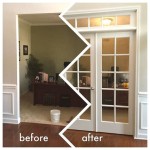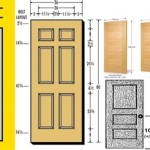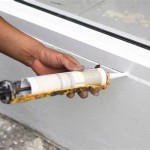How To Install Interior French Doors
Interior French doors offer an elegant and versatile way to enhance the flow and aesthetic of a home. Their glass panes allow natural light to permeate adjoining rooms while simultaneously providing a degree of privacy and separation when desired. Properly installing French doors requires careful planning and precise execution to ensure smooth operation and a professional finish.
Preparation is Key: Before beginning the installation process, carefully measure the existing doorway. Accurate measurements are crucial for selecting the correct size French doors and ensuring a proper fit. Remove the existing door, including the frame and any remaining trim. Inspect the rough opening for any damage or rot, repairing as needed. A plumb and level opening is essential for optimal door function.
Assembling the Frame: Most pre-hung French doors come with a pre-assembled frame. However, some may require assembly. Carefully follow the manufacturer's instructions for assembling the frame. Ensure all joints are tight and square, using wood glue and screws for added strength and stability. Pre-drill screw holes to prevent splitting the wood.
Test Fitting the Doors: Place the assembled frame and doors into the rough opening without securing them. This allows for necessary adjustments before final installation. Check the fit around the entire perimeter, ensuring even gaps between the frame and the rough opening. Verify the doors swing freely and latch correctly. Shim as needed to achieve a plumb and level fit.
Securing the Frame: Once the fit is confirmed, secure the frame to the rough opening using long screws driven through the pre-drilled holes in the frame and into the framing studs. Use shims as necessary to maintain a plumb and level installation. Check the door operation frequently during this process to ensure proper alignment.
Installing the Trim: With the frame securely in place, install the interior trim around the perimeter of the doorway. Miter the corners of the trim for a professional finish. Secure the trim to the frame using finishing nails. Caulk the seams between the trim and the wall for a seamless and weather-tight seal.
Hanging the Doors: If the doors were not pre-hung, carefully hang them on the hinges attached to the frame. Ensure the doors swing freely and latch correctly. Adjust the hinges as needed to achieve proper alignment and operation. Install door handles and latch hardware according to the manufacturer's instructions.
Addressing Gaps and Sealing: Inspect the perimeter of the installed doors for any gaps. Fill any gaps between the frame and the rough opening with expanding foam insulation. Allow the foam to dry completely before trimming any excess. This creates an airtight and weather-resistant seal, enhancing energy efficiency.
Finishing Touches: Once the foam insulation is dry, caulk the seams between the frame and the wall. This provides a finished look and further seals the doorway against drafts. Paint or stain the trim and door frame to match the surrounding décor.
Hardware Considerations: Select appropriate hardware that complements the style of the French doors and the overall décor. Consider the functionality of the hardware as well. Lever-style handles are generally easier to operate than traditional doorknobs, especially for individuals with limited hand strength.
Glass Options: French doors offer a variety of glass options, ranging from clear glass for maximum light transmission to frosted or textured glass for increased privacy. Consider the desired level of privacy and light transmission when selecting glass for interior French doors.
Threshold Options: Choosing the right threshold is important for both aesthetics and functionality. Standard thresholds provide a smooth transition between rooms. Consider a threshold with a built-in weatherstrip for enhanced energy efficiency.
Maintenance and Care: Regular maintenance will help ensure the longevity and optimal performance of interior French doors. Periodically check the hardware for looseness and tighten as needed. Clean the glass panes with a suitable glass cleaner to maintain clarity. Lubricate hinges and moving parts to prevent squeaking and ensure smooth operation.
Professional Installation: While installing interior French doors can be a rewarding DIY project, it requires a certain level of skill and precision. If you are unsure about any aspect of the installation process, consider hiring a qualified professional. A professional installer has the experience and expertise to ensure a proper and efficient installation, minimizing the risk of complications.

How To Install French Doors Interior Exterior Pre Hung Rustica

Interior French Doors Are No Job For A Neophyte Do It Yourself Er Silive Com

How To Install French Doors With A Transom Window Part 1 Hallway Makeover Simplicity In The South

Interior French Door With Diy Transom Window Pneumatic Addict

How To Install French Doors With A Transom Window Part 1 Hallway Makeover Simplicity In The South

How To Add French Doors Close In A Wall House Of Hepworths

Steps To Install French Doors At Home Ais Windows

Installing French Doors With A Diy Transom Window Interior

How To Install French Doors With A Transom Window Part 1 Hallway Makeover Simplicity In The South

How To Install French Doors
Related Posts








